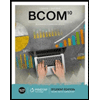OSCM-471571_Homework1
docx
keyboard_arrow_up
School
University Of Arizona *
*We aren’t endorsed by this school
Course
471
Subject
Business
Date
Apr 3, 2024
Type
docx
Pages
11
Uploaded by DukeRabbitMaster1028
OSCM 471/571 Optimization and Decision Support Modeling for Business
Homework 1, Spring 2024
Notice for Homework 1
Instructor: Seokjun Youn (
syoun@email.arizona.edu
)
Due date: Thursday 2/1, 11:59 pm
o
Please submit your files to D2L > Assignments > Homework 1
1.
A Word file (or PDF) with your answers combined into a single document.
2.
An Excel spreadsheet template with your answers (for some sub-questions).
This homework is made up of THREE questions (20 pts): o
Q1: 10 sub-questions (8 pts)
o
Q2: 4 sub-questions (6 pts)
o
Q3: 2 sub-questions (6 pts)
Students may choose either handwriting or word processing (or both).
o
Handwriting: please properly scan or take photos and organize them into one file
before uploading in D2L.
Please write down your solutions step-by-step for partial credit.
You may use:
o
Your textbook and notes from the class.
o
Notes or sources from a related class or internet source.
o
Discussion with the instructor.
o
Voluntary, mutual, and cooperative discussion with other students currently taking
the class.
You may not use:
o
Solution manuals (printed or electronic).
o
Copying from other students in this class, including expecting them to reveal their
solutions in “discussion.”
It is fine if your answer is not 100% correct. However, if you do not put enough effort to the
assignment, your score for this homework will be lower than your expectation. So, please
try to convince your logic to instructor.
1/11
OSCM 471/571 Optimization and Decision Support Modeling for Business
Homework 1, Spring 2024
Naman Jain:
1.
The Whitt Window Company is a company with only three employees that makes two
different kinds of handcrafted windows: a wood-framed and an aluminum framed window.
They earn $60 profit for each wood-framed window and $30 profit for each aluminum-
framed window. Doug makes the wood frames and can make 6 per day. Linda makes the
aluminum frames and can make 4 per day. Bob forms and cuts the glass and can make 48
square feet of glass per day. Each wood-framed window uses 6 square feet of glass and
each aluminum-framed window uses 8 square feet of glass. The company wishes to determine how many windows of each type to produce per day
to maximize total profit.
a.
Construct and fill in a table for this problem like the table of the Wyndor Glass Co. problem during the class, identifying both the activities and the resources.
Answer: The Whitt Window Company's situation parallels that of the Wyndor Glass Co. challenge, as both require optimizing limited resources for maximum profitability. In the Wyndor case, the constraints were the production capacities of Plants 1, 2, and 3. Conversely, for Whitt Window Company, the limiting factors are the quantities of glass, wood, and aluminum available for use.
Below is a table that aligns with the framework of Table 2.1 from the Wyndor Glass Co. case study, clearly outlining the activities (window production) and the constrained resources:
Resources
Wood-framed
Window
Aluminum-framed
Window
Resource
Availability
Glass (sq ft)
6
8
48
Wood (units/day)
1
0
6
Aluminum (units/day)
0
1
4
Unit profit
$60
$30
In this structured approach, we translate the production of wood-framed and aluminum-
framed windows into activities, while treating glass, wood, and aluminum as the resources that are subject to availability limits. This setup is instrumental in determining the optimal production mix to maximize the company’s daily profit, given the material and labor constraints.
b.
Identify verbally the decisions to be made, the constraints on these decisions, and
the overall measure of performance for the decisions. 2/11
OSCM 471/571 Optimization and Decision Support Modeling for Business
Homework 1, Spring 2024
Answer: The Whitt Window Company must decide how many wood-framed and
aluminum-framed windows to produce each day to maximize profit. The constraints include
Doug's limit of 6 wood-framed windows per day, Linda's limit of 4 aluminum-framed
windows per day, and Bob's capacity to provide 48 square feet of glass daily. The measure of
performance is the total daily profit, aiming to maximize it within the bounds of these
constraints.
c.
Formulate a spreadsheet model for this problem. Identify the data cells, the
changing cells, and the objective cell. Also show the Excel equation for each output
cell expressed as a SUMPRODUCT function. Then use Solver to solve this model.
Please include the screenshot of your final spreadsheet model here.
Answer:
Excel equation for each output cell expressed as a SUMPRODUCT function:
d.
Indicate why this spreadsheet model is a linear programming model.
Answer:
This spreadsheet model is a linear programming model because it optimizes a linear
objective function (maximizing total profit) subject to linear constraints (labor and material
limits). The decision variables (quantities of wood-framed and aluminum-framed windows
produced) are continuous and subject to non-negativity, ensuring production quantities
cannot be negative. The constraints, including maximum production capacities and glass
availability, are linear relationships involving these decision variables. Thus, the model fulfills
linear programming characteristics: a linear objective, linear constraints, decision variables,
and non-negativity.
e.
Formulate this same model algebraically.
Answer: Formulate this same model algebraically.
Decision Variables:
W = the number of wood-framed windows to produce
A = the number of aluminum-framed windows to produce
3/11
Your preview ends here
Eager to read complete document? Join bartleby learn and gain access to the full version
- Access to all documents
- Unlimited textbook solutions
- 24/7 expert homework help
OSCM 471/571 Optimization and Decision Support Modeling for Business
Homework 1, Spring 2024
Maximize Profit:
Profit = $60W + $30A
Subject to:
Glass production
: 6W + 8A ≤ 48
Wood-framed production: W ≤ 6
Aluminum-framed production: A ≤ 4
Non-negativity constraints:
W ≥ 0
A ≥ 0
Identify the decision variables, objective function, nonnegativity constraints,
functional constraints, and parameters in both the algebraic version and
spreadsheet version of the model.
Decision Variables:
W = the number of wood-framed windows to produce
A = the number of aluminum-framed windows to produce
Constraints:
Available production capacity in each of the resources (functional constraints):
Glass: 6W + 8A ≤ 48
Wood: W ≤ 6
Aluminum: A ≤ 4
Non-negativity constraints:
W ≥ 0
A ≥ 0
Objective Function:
Profit = $60W + $30A
Total Profit (Excel Formula):
=
SUMPRODUCT(B2:C2,B5:C5)
Parameters:
The profit per unit for wood-framed ($60) and aluminum-framed ($30) windows.
f.
Use the graphical method to solve this model.
Answer: Corner Points:
(0, 0) :
P
=
$ 0
(0, 4 ): P
=
$
120
(6,0): P
=
$ 360
(6,4 ): P
=
$ 480−
optimal solution
4/11
OSCM 471/571 Optimization and Decision Support Modeling for Business
Homework 1, Spring 2024
g.
A new competitor in town has started making wood-framed windows as well. This
may force the company to lower the price it charges and so lower the profit made
for each wood-framed window. How would the optimal solution change (if at all) if
the profit per wood-framed window decreases from $60 to $40? From $60 to $20?
Answer: If the profit per wood-framed window decreases from $60 to $40, we
must re-evaluate the objective function while keeping the constraints the same.
Original Objective Function: Profit=$60
W
+$30
A
New Objective Function with $40 Profit for Wood-Framed: Profit=$40
W
+$30
A
Further Decrease to $20 Profit for Wood-Framed:
Profit=$20
W
+$30
A
Impact on Optimal Solution:
1.
Decrease to $40:
The reduced profit margin for wood-framed windows may shift the optimal
production balance towards producing more aluminum-framed windows since
they become relatively more profitable.
We need to recalculate the profits at each corner point of the feasible region to
find the new optimal solution.
2.
Decrease to $20:
With a significant decrease to $20, the optimal solution is likely to favor
producing aluminum-framed windows even more, as the profit from wood-
framed windows is now much lower.
Again, the profits at the corner points of the feasible region must be recalculated
to find the optimal solution.
In both scenarios, the optimal solution will change if the profit from wood-framed
windows becomes less than the profit from producing the maximum number of
aluminum-framed windows within the glass constraint. We would calculate the
profits at all feasible corner points with the new profit values to determine the
optimal solution.
h.
Doug is considering lowering his working hours, which would decrease the number
of wood frames he makes per day. How would the optimal solution change if he only
makes 5 wood frames per day?
Answer: If Doug decreases his working hours, resulting in a maximum production of
5 wood-framed windows per day instead of 6, the constraints in the linear
programming model will change.
Original Wood-framed Production Constraint: W
≤6
New Wood-framed Production Constraint with Doug's Reduced Hours: W
≤5
The optimal solution may change as follows:
5/11
OSCM 471/571 Optimization and Decision Support Modeling for Business
Homework 1, Spring 2024
The feasible region in the graphical method will shift, reducing the maximum possible
value of W
from 6 to 5.
The corner points of the feasible region will change, specifically the points where the
wood-framed production constraint is binding.
We would need to recalculate the profit at each new corner point of the feasible region
with the updated constraint W
≤5.
The total profit may decrease if the production of wood-framed windows at the profit of
$60 each was part of the original optimal solution.
If the original optimal solution was not at the maximum production capacity for wood-
framed windows, the change might not affect the optimal solution.
6/11
Your preview ends here
Eager to read complete document? Join bartleby learn and gain access to the full version
- Access to all documents
- Unlimited textbook solutions
- 24/7 expert homework help
OSCM 471/571 Optimization and Decision Support Modeling for Business
Homework 1, Spring 2024
2.
The Primo Insurance Company is introducing two new product lines: special risk insurance
and mortgages. The expected profit is $5 per unit on special risk insurance and $2 per unit
on mortgages. Management wishes to establish sales quotas for the new product lines to maximize
total expected profit. The work requirements are shown below: a.
Identify verbally the decisions to be made, the constraints on these decisions, and
the overall measure of performance for the decisions. Answer: Decisions to be Made:
Determine the number of units to sell for special risk insurance.
Determine the number of units to sell for mortgages.
Constraints on These Decisions:
The Underwriting department can provide a maximum of 2,400 work-hours, and they
require 3 hours per unit of special risk insurance and 2 hours per unit for mortgages.
The Administration department has 800 work-hours available and requires 1 hour per
unit for mortgages (and none for special risk insurance).
The Claims department has 1,200 work-hours available and requires 2 hours per unit of
special risk insurance (and none for mortgages).
Overall Measure of Performance:
The measure of performance is the total expected profit, with a profit of $5 per unit for
special risk insurance and $2 per unit for mortgages. The objective is to maximize this
total profit.
b.
Convert these verbal descriptions of the constraints and the measure of
performance into quantitative expressions in terms of the data and decisions.
Answer: Decision Variables:
Let S
represent the number of units sold for special risk insurance.
Let M
represent the number of units sold for mortgages.
Objective Function:
Maximize total expected profit: Profit=5
S
+2
M
Constraints:
Underwriting Department Constraint: 3
S
+2
M
≤2400 work-hours
7/11
OSCM 471/571 Optimization and Decision Support Modeling for Business
Homework 1, Spring 2024
Administration Department Constraint: M
≤800 work-hours (since they only work on
mortgages and require 1 hour per unit)
Claims Department Constraint: 2
S
≤1200 work-hours (since they only work on special risk
insurance and require 2 hours per unit)
Non-Negativity Constraints:
S
≥0 (Cannot sell a negative number of insurance units)
M
≥0 (Cannot sell a negative number of mortgage units)
These expressions provide the linear programming model's mathematical structure
to maximize profit while adhering
to the constraints imposed by the available work-
hours in each department.
c.
Formulate and solve a linear programming model for this problem on a spreadsheet.
Please include the screenshot of your final spreadsheet model here.
Answer:
d.
Formulate this same model algebraically.
Answer: Certainly, here's the linear programming problem reformulated for clarity:
Let:
R
represent the number of sales quotas for special risk insurance.
M
represent the number of sales quotas for mortgages.
Objective: Maximize the total profit Profit
, which is calculated as Profit
=5
R
+2
M
Constraints:
1.
The total work-hours for underwriting should not exceed their availability, so:
3
R
+2
M
≤2400
2.
The total work-hours for administration are dedicated to mortgages only and should not
exceed their availability, so: M
≤800
3.
The total work-hours for claims are dedicated to special risk insurance only and should
not exceed their availability, so: 2
R
≤1200
Non-negativity Constraints: 4. The sales quotas for special risk insurance must be
non-negative, so: R
≥0
8/11
OSCM 471/571 Optimization and Decision Support Modeling for Business
Homework 1, Spring 2024
5.
The sales quotas for mortgages must be non-negative, so: M
≥0
This model seeks to determine the values of R
and M
that will maximize the profit
while satisfying the constraints of work-hours availability in each department.
9/11
Your preview ends here
Eager to read complete document? Join bartleby learn and gain access to the full version
- Access to all documents
- Unlimited textbook solutions
- 24/7 expert homework help
OSCM 471/571 Optimization and Decision Support Modeling for Business
Homework 1, Spring 2024
3.
The Learning Center runs a day camp for 6-10 year olds during the summer. Its manager,
Elizabeth Reed, is trying to reduce the center’s operating costs to avoid having to raise the
tuition fee. Elizabeth is currently planning what to feed the children for lunch. She would
like to keep costs to a minimum, but also wants to make sure she is meeting the nutritional
requirements of the children. She has already decided to go with peanut butter and jelly
sandwiches, and some combination of apples, milk, and/or cranberry juice. The nutritional
content of each food choice and its cost are given in the table that accompanies this
problem. The nutritional requirements are as follows. Each child should receive between 300 and
500 calories, but no more than 30 percent of these calories should come from fat. Each
child should receive at least 60 milligrams (mg) of vitamin C and at least 10 grams (g) of
fiber.
To ensure tasty sandwiches, Elizabeth wants each child to have a minimum of 2 slices of
bread, 1 tablespoon (tbsp) of peanut butter, and 1 tbsp of jelly, along with at least 1 cup of
liquid (milk and/or cranberry juice). Elizabeth would like to select the food choices that
would minimize cost while meeting all these requirements. a.
Formulate and solve a linear programming model for this problem on a spreadsheet.
Please include the screenshot of your final spreadsheet model here.
Answer:
b.
Formulate this same model algebraically.
10/11
OSCM 471/571 Optimization and Decision Support Modeling for Business
Homework 1, Spring 2024
Answer: Let:
B
be the number of bread slices to use and buy.
PB
be the amount of peanut butter to use per tablespoon.
J
be the amount of jelly to use per tablespoon.
A
be the number of apples to use and buy.
M
be the amount of milk given per cup.
CJ
be the amount of cranberry juice given per cup.
Objective: Minimize the total cost (
Cost
), which is calculated as: Cost
=0.06
B
+0.05
PB
+0.08
J
+0.35
A
+0.20
M
+0.40
CJ
Total calories needed:
300
≤
80 B
+100 PB
+70 J
+90 A
+120
M
+110 J ≤
5 00
Calories from Fat needed: 15
B
+80
PB
+60
M ≤
30%
×TotalCalories
Vitamin C (mg) needed: 4 J
+6 A
+2
M
+80
CJ ≥
60
Fiber (g) needed: 4 B
+3 J
+10 A
+
CJ ≥
10
Slices of bread needed: B≥
2
Amount of peanut butter (tbsp) needed: PB≥
1
Amount of jelly (tbsp) needed: J ≥
1
Liquid requirement: M
+
CJ≥ 1
B≥
0
PB≥
0
J ≥
0
A ≥
0
M≥
0
CJ ≥
0
11/11
Recommended textbooks for you

BUSN 11 Introduction to Business Student Edition
Business
ISBN:9781337407137
Author:Kelly
Publisher:Cengage Learning

Essentials of Business Communication (MindTap Cou...
Business
ISBN:9781337386494
Author:Mary Ellen Guffey, Dana Loewy
Publisher:Cengage Learning

Accounting Information Systems (14th Edition)
Business
ISBN:9780134474021
Author:Marshall B. Romney, Paul J. Steinbart
Publisher:PEARSON


International Business: Competing in the Global M...
Business
ISBN:9781259929441
Author:Charles W. L. Hill Dr, G. Tomas M. Hult
Publisher:McGraw-Hill Education

Recommended textbooks for you
 BUSN 11 Introduction to Business Student EditionBusinessISBN:9781337407137Author:KellyPublisher:Cengage Learning
BUSN 11 Introduction to Business Student EditionBusinessISBN:9781337407137Author:KellyPublisher:Cengage Learning Essentials of Business Communication (MindTap Cou...BusinessISBN:9781337386494Author:Mary Ellen Guffey, Dana LoewyPublisher:Cengage Learning
Essentials of Business Communication (MindTap Cou...BusinessISBN:9781337386494Author:Mary Ellen Guffey, Dana LoewyPublisher:Cengage Learning Accounting Information Systems (14th Edition)BusinessISBN:9780134474021Author:Marshall B. Romney, Paul J. SteinbartPublisher:PEARSON
Accounting Information Systems (14th Edition)BusinessISBN:9780134474021Author:Marshall B. Romney, Paul J. SteinbartPublisher:PEARSON
 International Business: Competing in the Global M...BusinessISBN:9781259929441Author:Charles W. L. Hill Dr, G. Tomas M. HultPublisher:McGraw-Hill Education
International Business: Competing in the Global M...BusinessISBN:9781259929441Author:Charles W. L. Hill Dr, G. Tomas M. HultPublisher:McGraw-Hill Education

BUSN 11 Introduction to Business Student Edition
Business
ISBN:9781337407137
Author:Kelly
Publisher:Cengage Learning

Essentials of Business Communication (MindTap Cou...
Business
ISBN:9781337386494
Author:Mary Ellen Guffey, Dana Loewy
Publisher:Cengage Learning

Accounting Information Systems (14th Edition)
Business
ISBN:9780134474021
Author:Marshall B. Romney, Paul J. Steinbart
Publisher:PEARSON


International Business: Competing in the Global M...
Business
ISBN:9781259929441
Author:Charles W. L. Hill Dr, G. Tomas M. Hult
Publisher:McGraw-Hill Education
